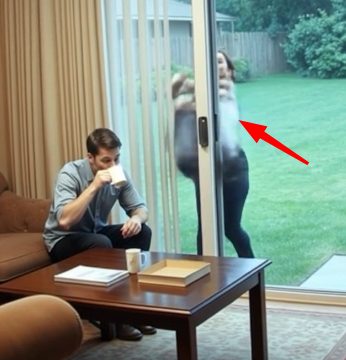Why build a house from scratch when you can transform a retired jetliner into a dream home?
That’s exactly what Jo Ann Ussery did when life threw her a curveball. After her home was destroyed, most people would’ve considered rebuilding or settling for a trailer. But Jo Ann had a different vision—one that quite literally took flight. Instead of traditional housing, she turned a decommissioned Boeing 727 into her full-time residence.

The idea came from an unexpected source: her brother-in-law, who worked as an air traffic controller. He suggested she look into purchasing a retired aircraft as an alternative living space. Intrigued by the concept, Ussery started researching and eventually found a Boeing 727 that had been taken out of service. The cost? A surprisingly affordable $2,000—cheaper than most used mobile homes.
Once she purchased the aircraft, she had it transported to a piece of land she owned in Benoit, Mississippi. The move wasn’t easy, and transforming a 138-foot long airplane into a livable home was no small task. But over the course of six months, Ussery dedicated herself to the ambitious project, pouring her time, energy, and savings into bringing her vision to life.
Inside the aircraft, she made extensive renovations. She installed insulation, full plumbing, electrical systems, and flooring. She turned the jet into a comfortable home complete with three bedrooms, a kitchen, a living room, a laundry area, and a show-stopping master bathroom located in the cockpit—complete with a hot tub, no less.
One of the most creative features was the entry system. Since the plane didn’t have a conventional front door, Ussery repurposed the rear stairway and installed a garage door opener to control it remotely. This unique entry point added a whimsical touch to the already extraordinary setup.
To add even more character, she positioned the plane so that half of it extended over a pond. From certain angles, it looked like the aircraft was flying low over the water—an effect that gave the home an ethereal quality. It was part art installation, part architectural marvel, and entirely one-of-a-kind.
The interior space proved to be more functional than you’d think. With a consistent width of about 12 feet across most of the fuselage, the plane provided a surprisingly open and spacious living environment. The original overhead compartments were kept and repurposed as convenient storage bins—sturdy, practical, and full of aviation charm. Even the original airplane toilet was still in working condition.
While parts of the interior were redone with warm wooden paneling, which gave the space a homier vibe, other elements remained untouched. Original trim, cabin lights, and even windows were preserved to maintain the feel of an aircraft. The balance between cozy home and aviation history was seamless.
One benefit of living in an airplane that most people wouldn’t expect was energy efficiency. Thanks to the plane’s pressurized, airtight design, it was well-insulated and retained heat during colder months, reducing utility costs.
Reflecting on her journey years later in an interview with NBC, Ussery estimated the total cost of turning the plane into a home came to about $50,000. While that may seem like a lot, it was still significantly less than building a new home from the ground up—and far more memorable.
In a playful twist, Ussery affectionately nicknamed her airplane home “Little Trump,” poking fun at former President Donald Trump’s luxurious private jet. But her project was far more than just a novelty. It was a statement of creativity, resilience, and resourcefulness. During the 1990s, she lived happily with her children in the aircraft, enjoying a lifestyle that blended innovation with personal comfort.
Sadly, her airplane home was damaged during an attempt to relocate it, ending its years as a residence. But the legacy of what Jo Ann Ussery accomplished lives on as a testament to thinking outside the box—or, in this case, outside the fuselage.
Her story continues to inspire people across the country to challenge conventional living and embrace bold, imaginative alternatives. After all, who says a home has to have walls and a roof when it could have wings?





